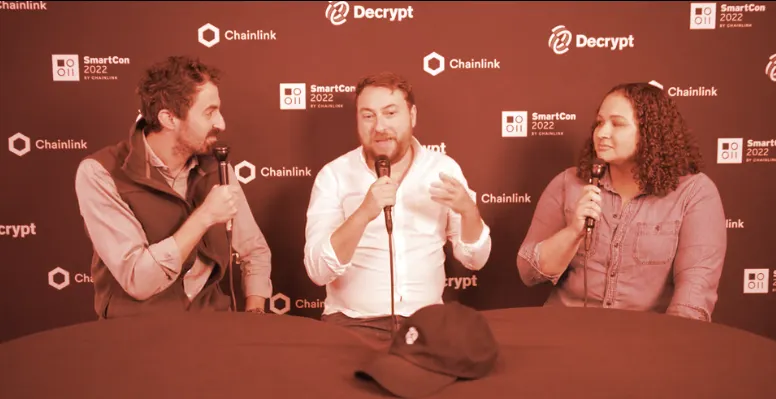In brief
- During the recent Terra meltdown and resulting crypto crisis, DeFi continued to chug along without a "hiccup," Compound's co-founder says.
- This distinction should be key in helping regulators see the value of DeFi, Leshner argues.
There's a way to view this summer's crypto liquidity crisis—and the resulting bankruptcies and bailouts of centralized lenders—as having demonstrated that decentralized finance (DeFi) is working as it should.
At least that's how Compound founder Robert Leshner sees it.
“I think the last couple of months have shown, without a doubt, the advantages that DeFi creates,” Leshner told Decrypt at Chainlink SmartCon in New York. “DeFi should be the foundation for pretty much every type of market and financial product in the future.”
As Bitcoin plummeted and centralized firms like the now-bankrupt Celsius scrambled to keep their firms afloat, the first debts they began paying off were debts made in DeFi land.
While many creditors still continue to wait to see their funds, back in July the lending firm paid off the last of its decentralized loans to MakerDAO. Previously, Celsius had gone down the line from Maker, then Aave, and also Leshner’s own Compound protocol.
And throughout this chaos, none of these platforms suffered a single “hiccup” thanks to smart contracts' unstoppable code and visibility.
"Every single DeFi protocol, Compound included, basically went through unbelievably turbulent times without a hiccup," Leshner said. "They were designed for radical transparency. So everybody knew exactly what assets were in Compound, what the borrowers looked like, how healthy the borrowers were, and all of the collateral that was necessary to support those borrowing positions was already held by Compound."
The funds, for example, weren’t being used elsewhere to gain additional leverage. (If they had been, everyone on Crypto Twitter would’ve known about it.)
As for the dealings of the various centralized platforms, Leshner said, none of this transparency existed, so firms like Celsius and Voyager could take their customers' funds and do whatever they wanted with them.
“Nobody knew what they were doing; unlike a DeFi protocol, they got to manage their business however they saw fit,” he said. “They were aggressively lending, un-collateralized, to Three Arrows Capital, or they were trading their customers' funds, or doing all these crazy things that no one thought their business model was. And these are the problems with CeFi [centralized finance]. And these are the things I think regulators should look at and say 'Wow, if they were DeFi, none of this would have happened.'"
Make everything a stablecoin
Meanwhile, the rapid growth of dollar-pegged blockchain tokens over the past two years has been nothing short of stunning. And it begs a key question: Why not put all financial markets on blockchains?
“I think we're going to start to see a lot of other stablecoins, both for foreign currencies like the pound or the yen, but also for different assets,” Leshner said.
So instead of just vanilla fiat flying around on various blockchains, he argued that soon we’ll begin seeing assets like real estate or government bonds.
And importantly, it’s all going to look like a stablecoin—just pegged to something else.
“In most use cases and examples, real-world assets—whether it's real estate, or stocks, or bonds, or something that's held off-chain coming onto a blockchain—it's going to look like a stablecoin,” said Leshner. What’s more, these new kinds of assets are going to find “a lot of adoption in DeFi” over the next decade.


